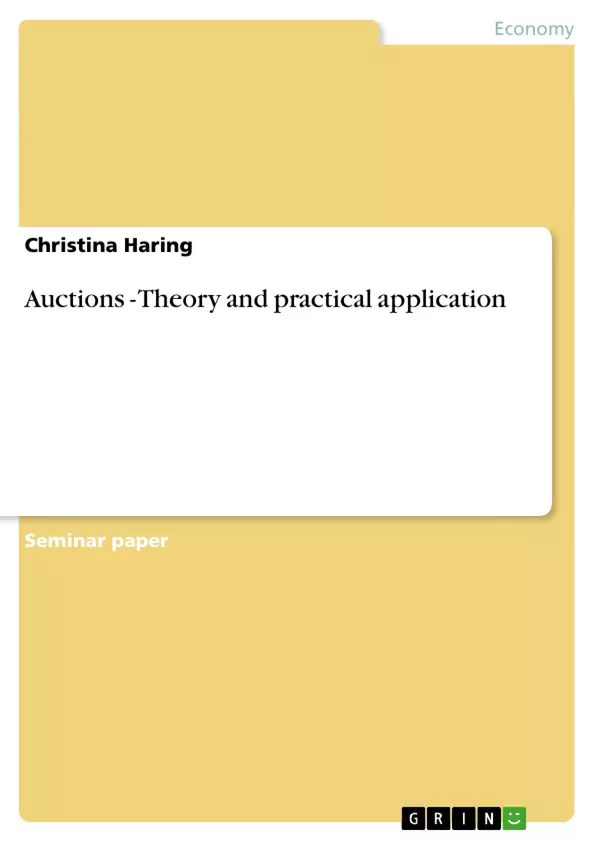For centuries, auctions are used to buy and sell goods and are regarded as an appropriate and effective method of a dynamical pricing procedure. In the last decades, economists are increasingly engaged in finding new, more efficient ways of auctions and developing the belonging strategies for bidders and sellers. Nowadays the development of new technologies has a strong impact on the economic environment. Many traditional business styles are transforming or are already transformed into electronic transactions. The increasing spread and usage of the Internet significantly influenced the auction business and caused a shift from the traditional forms to various online auction forms with a more extensive and flexible character according to product range, locations and payment methods.
The online auction pages are available 24 hours a day to people all over the world. In the last years, the reach of customers has dramatically expanded on a global basis, which indicates a clear threat to traditional auctioneers, who are loosing their market dominance. In the following study primarily the theoretical approaches of auctions and its most common types are examined. Based on one of the major types, a recent Internet auction company is analysed. Main attention is paid to the auction design and the deductive implications on revenues and economic efficiency in general.
Inhaltsverzeichnis (Table of Contents)
- Introduction
- Theoretical Approaches
- Company Profile
- Auction Design
- Auction Implications
- Revenues
- Economic Efficiency
- Conclusion
- Bibliography
Zielsetzung und Themenschwerpunkte (Objectives and Key Themes)
This study examines the theoretical approaches and types of auctions, analyzes a recent Internet auction company based on one of the major types, and investigates the implications of auction design on revenues and economic efficiency.
- Theoretical approaches to auctions
- Auction design and its impact on revenue generation
- Economic efficiency in auction settings
- The influence of online auctions on traditional auction models
- The impact of new technologies on the auction industry
Zusammenfassung der Kapitel (Chapter Summaries)
The study begins with an introduction to the history and evolution of auctions, highlighting their significance as a dynamic pricing mechanism. The second chapter delves into the theoretical foundations of auctions, focusing on four main types: English ascending, Dutch descending, first price sealed bid, and second price sealed bid (Vickrey) auctions. This chapter provides a comprehensive overview of the bidding strategies and market dynamics involved in each auction type. The third chapter analyzes a specific internet auction company, applying the theoretical concepts outlined in the previous chapters to understand its auction design and operational procedures. The subsequent chapters explore the implications of auction design, particularly on revenue generation and economic efficiency. These chapters examine the potential impact of different auction formats on the allocation of resources and the overall welfare of participants.
Schlüsselwörter (Keywords)
This study focuses on the economics of competition and regulation, specifically in the context of auctions. Key areas include auction theory, auction design, revenue optimization, economic efficiency, online auctions, and the impact of technology on traditional auction models.
- Citar trabajo
- Christina Haring (Autor), 2003, Auctions - Theory and practical application, Múnich, GRIN Verlag, https://www.grin.com/document/22789



